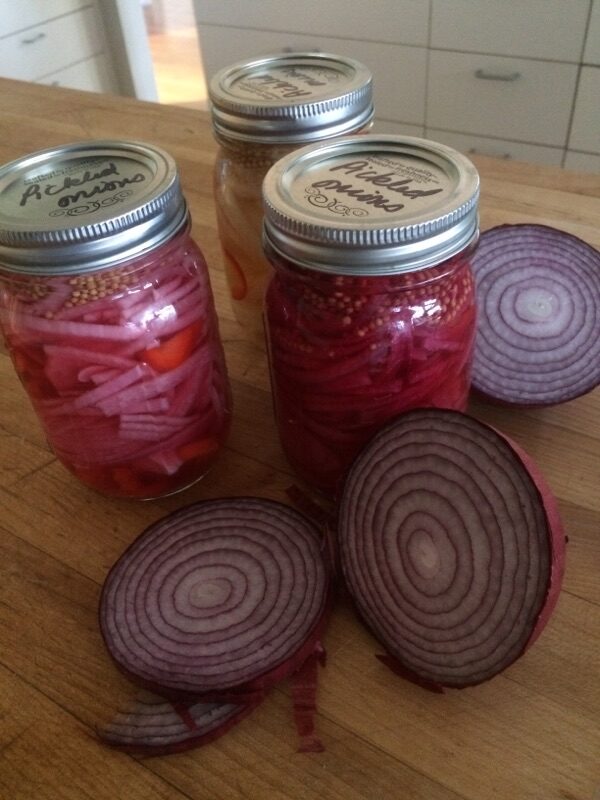If you’re looking for a fun and delicious way to kick off your stay in Madrid, opt to join The Tour Guy’s Ultimate Drinks and Tapas Tour. Not only will you sample mouthwatering traditional Spanish dishes and sip classic Spanish cocktails, but you’ll also learn about Madrid’s culinary history and culture in the process.

After meeting your guide and fellow foodies, you’ll begin eating your way through La Latina, a vibrant neighborhood known for its tapas bars and culinary treasures. The streets are narrow and lined with cafes, restaurants and watering holes, along with plazas dotted with beautiful churches and murals. This is one of Madrid’s oldest and liveliest areas and it bustles with activity, especially in the late afternoon and well into the evening hours.
First stop on the tour I took was Taberna La Buha, a cozy spot with an inviting atmosphere. Here, award-winning tortillas take centerstage. Our guide Layla told us that the tortilla is one of Spain’s most popular dishes. Basically, the ingredients are eggs, potatoes and onions, which are cooked in olive oil. Sometimes, cheese is added, as it was in the tortillas our group enjoyed.
Tortillas are a common tapa (an appetizer or snack) and you’ll see them on menus everywhere in Spain. Layla explained that the original meaning of “tapa” is a cover or lid in Spanish. The origin of the word is derived from an old custom of placing some bread or meat on top of a glass to prevent flies or dust from getting into the drink.
Tapas, which can be cold or hot, are usually shared among diners. They serve as an ideal and convenient introduction to Spanish food, as they offer the opportunity to try a variety of sampler-sized dishes. As such, one’s commitment to the food is minimal so if you don’t like something, at least you don’t have a full plate of it to contend with!

Accompanying our tortillas was Spanish beer from El Aguila Dorada, a 100 plus-year-old brewery. Layla told us that beer is the most common alcoholic drink in Spain and that it typically has a low alcohol count, which allows people to drink more of it. And drink they do, at all hours. At one café, I noticed a group of men switching between beer and espresso – in the middle of the morning!
Up next was Taberna La Concha, an old styled bar on Madrid’s iconic Calle Cava Baja Street. With its bright turquoise exterior, it’s hard to miss this long-time favorite spot for locals and tourists. Here we indulged in a decadent cheese board with an assortment of luscious Spanish cheeses, sweet quince paste and orange and cinnamon jam. We also imbibed in a glass of Manuela, homemade vermouth, reputed to be the best in the city.

We watched as the bartender meticulously crafted this artisanal cocktail. First he sprayed the triangle-shaped martini glass with gin, then filled it with the red vermouth and topped it with a dash of Campari bitters. Deliciously addicting!

After La Concha, we made our way to La Casa del Abuelo (“grandfather’s house”). This Madrid institution has been around since 1906 and purportedly was often frequented by Ernest Hemingway during the 1920s and 30s. I’ve heard many bars in this city make the same claim. Obviously, Papa got around!
Here we chowed down on calamari sandwiches made on squid ink bread. The squid ink gave the bread a gorgeous dark color and a rich, earthy, yet mild flavor. It paired beautifully with the crispy calamari and was accompanied by a glass of Abuelo’s famed sweet red wine.


At the final stop, Mesón del Champiñón, we did as the locals do and stood at the packed-out bar for a glass of Tinto de Verano, a classic Spanish drink made with red wine and soda. In between sips, we sampled the house’s signature grilled mushrooms. They are the “undisputed kings” of the place, and are served in traditional fashion with chorizo, garlic and parsley, or vegetarian style without the chorizo. The technique is to eat the mushrooms whole in one bite. I stopped counting how many I devoured, as they were so good!


Definitely come hungry for this tour, as the food offerings are plentiful.

















